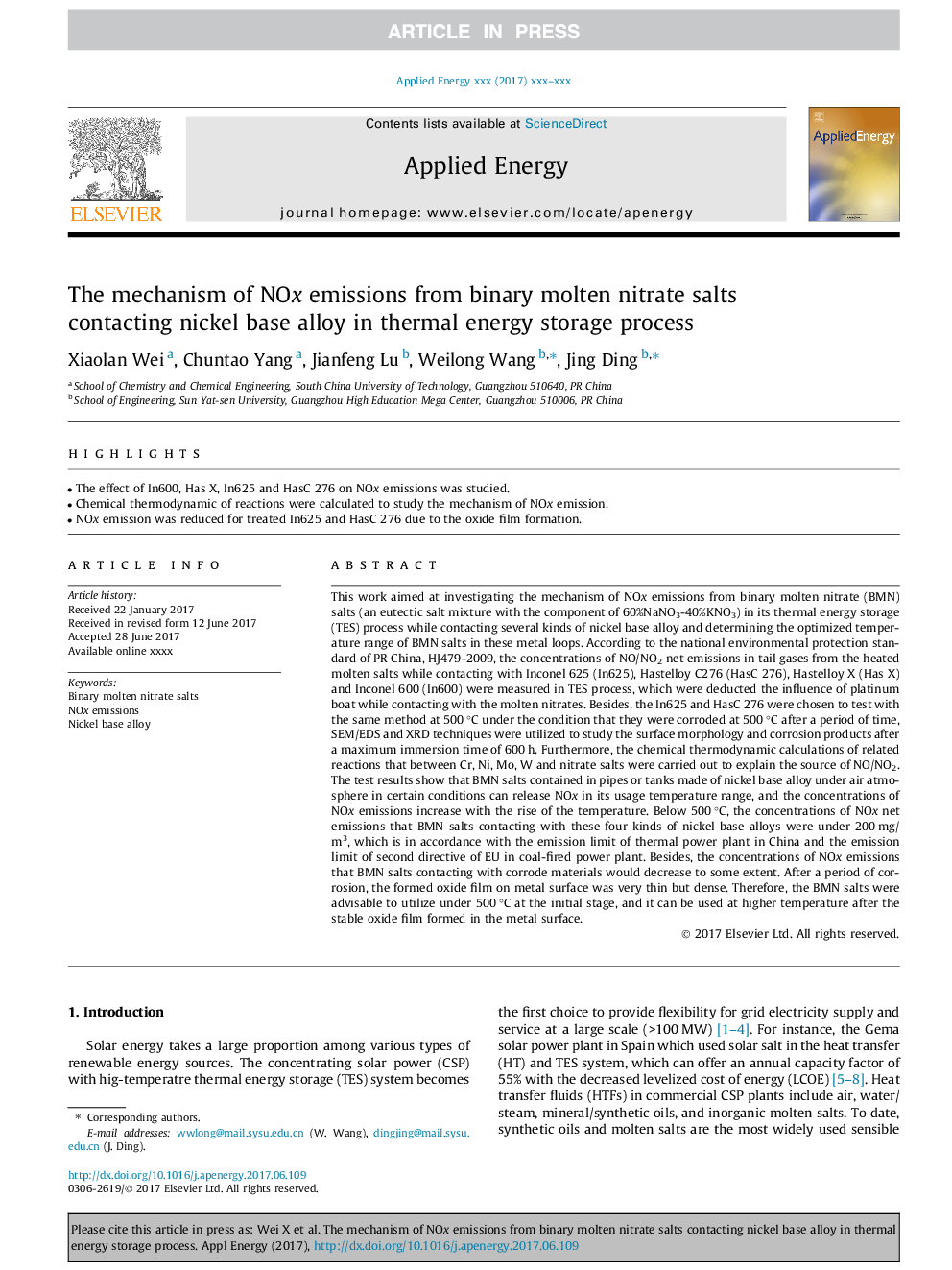| Article ID | Journal | Published Year | Pages | File Type |
|---|---|---|---|---|
| 6681889 | Applied Energy | 2017 | 9 Pages |
Abstract
This work aimed at investigating the mechanism of NOx emissions from binary molten nitrate (BMN) salts (an eutectic salt mixture with the component of 60%NaNO3-40%KNO3) in its thermal energy storage (TES) process while contacting several kinds of nickel base alloy and determining the optimized temperature range of BMN salts in these metal loops. According to the national environmental protection standard of PR China, HJ479-2009, the concentrations of NO/NO2 net emissions in tail gases from the heated molten salts while contacting with Inconel 625 (In625), Hastelloy C276 (HasC 276), Hastelloy X (Has X) and Inconel 600 (In600) were measured in TES process, which were deducted the influence of platinum boat while contacting with the molten nitrates. Besides, the In625 and HasC 276 were chosen to test with the same method at 500 °C under the condition that they were corroded at 500 °C after a period of time, SEM/EDS and XRD techniques were utilized to study the surface morphology and corrosion products after a maximum immersion time of 600 h. Furthermore, the chemical thermodynamic calculations of related reactions that between Cr, Ni, Mo, W and nitrate salts were carried out to explain the source of NO/NO2. The test results show that BMN salts contained in pipes or tanks made of nickel base alloy under air atmosphere in certain conditions can release NOx in its usage temperature range, and the concentrations of NOx emissions increase with the rise of the temperature. Below 500 °C, the concentrations of NOx net emissions that BMN salts contacting with these four kinds of nickel base alloys were under 200 mg/m3, which is in accordance with the emission limit of thermal power plant in China and the emission limit of second directive of EU in coal-fired power plant. Besides, the concentrations of NOx emissions that BMN salts contacting with corrode materials would decrease to some extent. After a period of corrosion, the formed oxide film on metal surface was very thin but dense. Therefore, the BMN salts were advisable to utilize under 500 °C at the initial stage, and it can be used at higher temperature after the stable oxide film formed in the metal surface.
Keywords
Related Topics
Physical Sciences and Engineering
Energy
Energy Engineering and Power Technology
Authors
Xiaolan Wei, Chuntao Yang, Jianfeng Lu, Weilong Wang, Jing Ding,
